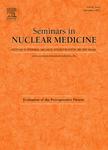版权所有:内蒙古大学图书馆 技术提供:维普资讯• 智图
内蒙古自治区呼和浩特市赛罕区大学西街235号 邮编: 010021

作者机构:YALE UNIVSCH MEDDEPT DIAGNOST RADIOLDIV NUCL MEDNEW HAVENCT 06510
出 版 物:《SEMINARS IN NUCLEAR MEDICINE》 (核医学论文集)
年 卷 期:1980年第10卷第3期
页 面:198-217页
核心收录:
学科分类:1002[医学-临床医学] 1009[医学-特种医学] 10[医学]
摘 要:The major clinical use of ventilation-perfusion (V/Q) scintigraphy is for the diagnosis of pulmonary embolism (PE). Accurate diagnosis of PE is essential since effective treatment is available but involves some risk to the patient. The scintigraphic characteristics of PE are segmental perfusion defects in lung that is normally ventilated and normal on the radiograph. The inherent shortcoming of perfusion scintigraphy is its lack of specificity. Combining a ventilation study with perfusion imaging improves the diagnostic specificity of lung scintigraphy. Xenon-133 is currently the most commonly used radionuclide for routine ventilation studies; a long washout technique is more sensitive than single-breath imaging when this radionuclide is used. We obtain preperfusion xenon-133 ventilation studies with a 4-min rebreathing equilibrium phase and a long 5-min washout phase to obtain maximum information. It is imperative that V/Q studies be interpreted with a current high quality chest radiograph. Interpretation of V/Q studies for PE is perhaps best done by assigning a probability diagnosis, since rarely is absolute specificity possible. This article details the criteria we use for these probability determinations.